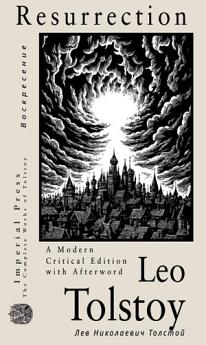Resurrection
Tungkol sa ebook na ito
He sold the book to the popular illustrated weekly Niva, which ran it in heavily censored installments from January to April 1899 and printed an unprecedented 215,000 copies of the book edition that December. Tolstoy sent almost all of the royalties—about 30,000 rubles—to help Russia’s pacifist Doukhobors emigrate to Canada. To preserve the uncut text he also allowed an uncensored edition to be printed abroad (Free Age Press, London/Geneva, 1899). The first English translation, by Louise and Aylmer Maude, appeared in London in 1900.
The journey drags him through courts, prisons, and convict trains. He watches ragged prisoners whipped for petty offenses while officials toast each other over crystal glasses, and he sees chaplains blessing it all in God’s name. Repelled, he strips away his privileges, gives his land to the peasants, ends his engagement to a shallow society beauty, and walks beside exiles in lice-ridden wagons. Maslova, hardened by abuse and mistrustful of his sudden remorse, drifts toward a fellow prisoner, but Nekhlyudov presses on, no longer looking for romantic redemption—only a chance to live truthfully.
Tolstoy tears into every pillar of respectable Russia: the legal system that jails the poor and spares the rich, the church, and the idle elite who call themselves moral while feeding on others’ misery. Yet Resurrection isn’t just an attack; it’s a statement that anyone can change if they face their own guilt and act on it- a return to the Existential. Nekhlyudov’s awakening, however messy, shows Tolstoy’s core belief: real resurrection is not a miracle from above but a conscious choice to stop hiding behind privilege and stand with the wounded.
This critical reader's edition presents a modern translation of the original manuscript, crafted for the modern reader with clean, contemporary language and simplified sentence structures that clarify his complex Russian phrasing and specific antiquated references. Supplementary material enriches the text with autobiographical, historical, and linguistic context, including an afterword by the translator on Tolstoy’s personal history, impact, and intellectual legacy, an index of the philosophical concepts he employs—emphasizing Existentialism and influence by Schopenhauer—a comprehensive chronological list of his published writings, and a detailed timeline of his life, highlighting the personal relationships that shaped his philosophy.







